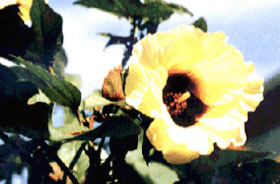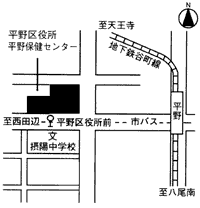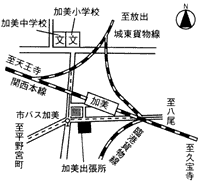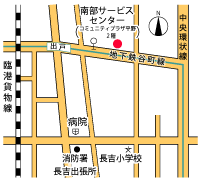|
|
||||||||||
|
||||||||||
| Hirano ward Home > Ward overview / Ward overview | ||||||||||
 |
| Established July 22, 1974 |
| Hirano-ku is situated in the southeast
of Osaka City. It is the most populous of all Osaka's wards and the third
largest. The northwestern part of Hirano-ku is less than five meters above
sea level, and the rest is between five and ten overall, making it one
of the higher plateaus of the city and therefore suited to residential
use. Hirano-ku has a long and colorful history; there are many cultural
assets for visitors to enjoy, as well as ancient burial mounds and archaeological
finds. The latter includes clay figures and earthenware, and the unique
boat-shaped clay figures are designated as important cultural assets. Since feudal times, Hirano, as with Sakai, has been known as an autonomous settlement; it thrived as a regional commercial center and, since the Meiji era, has continued to develop remarkably. Following WWII, public housing and high-rise apartment blocks began to spring up around the agricultural plains?that, incidentally, remained relatively untouched?and the population grew to be the largest in the city. While the ward is generally a residential place, there is a wide variety within that characterization. The Kire, Uriwari, and Nagayoshi areas in the south are mostly outfitted with new houses and apartments, while Hirano in the center has a very historical feel, sporting a number of old houses, shrines, and temples. Meanwhile, Kami in the northern reaches of the ward is an industrial hub, with many factories and other commercial installations. Public facilities in Hirano-ku include: Creo Osaka Minami, the southern branch of a center for the promotion of equal participation in society by both sexes; "Otoshiyori Sukoyaka Center Nanbukan," a facility that supports self-sufficiency among senior citizens and helps them avoid the need for permanent residential care; and Osaka Craft Park, which promotes arts and crafts based on the key phrase "meet, learn, create." Furthermore, there is also a completely barrier-free indoor swimming pool; the Hirano Library, which aims to promote human rights and culture; and a range of other facilities to enrich the lives of residents and build hope for the future. Hirano-ku has reconstructed the ward office and its Kami branch, taking into full consideration the protection of the existing attractive appearance of the area; the construction was based on design standards that are considerate to all residents and other people. From April 2003, the ward will move its waste incineration and disposal works to its new factory, which boasts the latest in environmentally considerate features. Furthermore, Hirano-ku is developing itself as a citizen-driven place. The "Hope Zone Committee" has been established with the aim of creating a residential area in the old Hirano township that takes advantage of the region's unique history and culture. There is also a "living" museum that features actual houses and facilities in the town. Hirano-ku will continue to make use of its rich natural bounty, its citizens and administrative leadership, and transform itself into a uniquely attractive ward. |
 In
July 1986, Hirano-ku's community association, the operating committee
for the greening of the area, and the organizing committee of the "Sukiyanen
Osaka" citizens' movement called for public submissions for an official
ward flower in commemoration of the 10th anniversary of the establishment
of the community association and in preparation for the International
Garden and Greenery Exposition in 1990. The aim was to show Hirano-ku's
true nature as a place blessed by nature and whose citizens lived enriched,
enjoyable lives. There were many entries and the winner was the cotton
flower gossypium. In
July 1986, Hirano-ku's community association, the operating committee
for the greening of the area, and the organizing committee of the "Sukiyanen
Osaka" citizens' movement called for public submissions for an official
ward flower in commemoration of the 10th anniversary of the establishment
of the community association and in preparation for the International
Garden and Greenery Exposition in 1990. The aim was to show Hirano-ku's
true nature as a place blessed by nature and whose citizens lived enriched,
enjoyable lives. There were many entries and the winner was the cotton
flower gossypium.In the Edo period, ginned cotton and other kinds of cotton were the industries that epitomized the area the most. Hirano-ku thrived as a cotton distribution hub, and it developed even more so in that direction well into the Meiji era. The cotton plant has a wonderfully aesthetic flower and fruit, from which soft, white tufts of cotton emerge. The prosperity of the fruit that follows the beauty of the flower represents the hopes and dreams of all Hirano-ku inhabitants. |
| Hirano Ward Office |
 3-8-19,
Setoguchi, Hirano-ku Osaka 3-8-19,
Setoguchi, Hirano-ku OsakaPhone : 06-4302-9625 (General Affairs Department)  |
| Hirano Ward Office Kami Branch |
 1-9-3,
Kamikuratsukuri, Hirano-ku, Osaka 1-9-3,
Kamikuratsukuri, Hirano-ku, OsakaPhone : 06-6791-0446 |
| Hirano Ward South Service Center |
 2F, Community Plaza Hirano, 5-3-58, Nagayoshi Deto, Hirano-ku, Osaka 2F, Community Plaza Hirano, 5-3-58, Nagayoshi Deto, Hirano-ku, OsakaPhone : 06-6709-1201 |